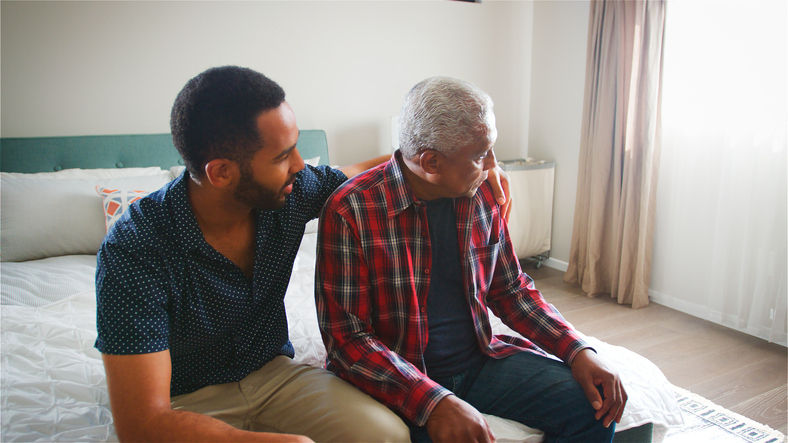What’s Your Plan to Age in Place?
- Elder Care Law Blogger
- May 6, 2022
- 4 min read
Updated: Oct 6, 2022

According to a recent University of Michigan poll, 88 percent of people over age 50 said they hope to grow old living where they are right now.
Far fewer have any plans to turn those hopes into reality. That’s why people often find themselves in a nursing home after a health crisis, according to Elder Care Coordinator Debra King.
The key to successful aging in place is to have a plan for where you will live during the years when your health is in decline. Research shows that about two thirds of older adults over age 65 will develop chronic conditions or disabilities that create the need for long-term care. “Many people believe that they will be part of the 30 percent that has the good fortune of dying in their sleep,” Debra noted. “Most won’t be so lucky.”
If you want to remain living at home as your health declines, it’s important to start planning early, but many people don’t. Debra can cite dozens of stories of people who were surprised by health changes and the impact those change had on their living arrangements. “One couple in their mid-70s had retired in a big, multi-story house,” Debra said. “Then, the husband had a debilitating stroke. He was never the same again. He couldn’t walk, he needed assistance with toileting, he couldn’t manage his affairs, and his personality changed. He was unable to navigate safely through their big new house, so they ended up moving into a smaller, more suitable home. None of this was in their plans.”
Understand How Aging Works
Takacs McGinnis uses a graphic called the Elder Care Continuum to depict how health changes as a person ages can impact housing, independence, and finances. As an older adult’s ability to perform the activities of daily living decreases, care needs increase. “This gives us a way to assess the impact of declining function on every other part of life,” Debra explained. “If your plan is to age at home, what care will you need? Who will provide that care? Will it be family members or professional caregivers? Where will the money come from to pay for that care? How long will your money last? All of these questions need to be answered well in advance of a health crisis.”
Start with a Home Safety Assessment
It’s not easy to think about getting older, and how that might change your ability to see, move, hear, drive, or even think as you do now. “One of the best ways to start the planning process is to imagine an older version of yourself living in your current home,” Debra advised. “Imagine that you have limited mobility. What might it take to help you get in the door, to go up and down the stairs, to take a shower or bath, to do laundry, bring groceries in, or to cook a meal?”
Hiring an occupational therapist to conduct a home safety assessment is one way to get a professional opinion about your home. He or she can make expert recommendations for products and modifications that will improve safety, functionality, and comfort.
Money may be a factor. It’s important to consider whether your home can be modified for your changing circumstances in a way the meets your budget. “Not all homes can be made age friendly in an affordable way,” counseled Debra. “If you realize that your current home can’t be made suitable, you can start looking for a senior friendly home now.”
Make Small Changes Over Time
Starting early gives you the luxury of making your home age friendly a little at a time. Tasks like these are a good way to begin the process:
Install railings on every staircase, including along the steps to every entry door.
Mount grab bars in the tub or shower, and in the rest of the bathroom.
Upgrade lighting by adding ceiling fixtures and LED bulbs that give off more light.
Put nightlights in bathrooms, hallways, and staircases to lessen the chance of falls at night.
Replace flooring that creates fall hazards, such as area rugs and slippery carpeting.
Clear paths through rooms by moving or removing furniture.
Move cords out of traffic areas to minimize trip hazards.
Invest in tech devices that make living at home safer, such as a doorbell camera, remote-controlled door locks, a wearable device that can be used to call for help in case of a fall, motion-activated lights, automated medication reminders, and in-home cameras.
Rely on the Right Professionals for Bigger Projects
For major home modifications, consult with professionals who specialize in making homes age friendly. A Certified Aging in Place Specialist or an ADA-certified home remodeler is a good place to start. “These professionals understand the unique needs of the older adult population,” Debra said. “They will be knowledgeable about home modification projects that address the most common barriers to remaining at home, such as bathroom remodels, ramps, stair lifts, and doorway widening.
Identify Sources of Help
Hoping that someone will be there for you as you age at home is not a good plan. Your plan for aging should include identifying the services and support you will need to live independently for as long as possible. If there’s no family in the picture, organizations like the Area Agencies on Aging can help connect you with housing, programs, and services that support independent living. “Starting the planning process now, well before any health issues, is absolutely essential,” Debra added. “Without this planning, your family may have no other option than to place you in a long-term care facility. No one wants that.”







Comments